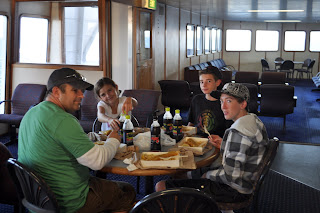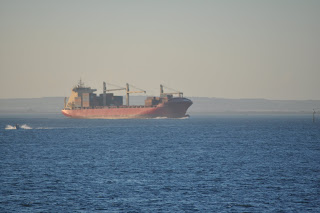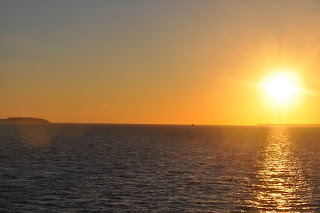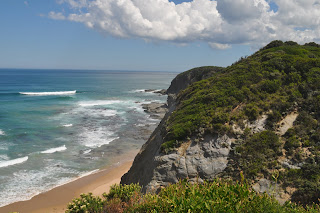Our first full day on the Great Ocean Road had us making our way to The Twelve Apostles. The Twelve Apostles are giant rock stacks that rise from the Southern Ocean. They are located just east of Port Campbell, Victoria and are along the Great Ocean Road.
They were formed by the constant erosion of the limestone cliffs of the coastline. Over a period of 10 to 20 million years the stormy Southern Ocean and the blasting winds slowly eroded the soft limestone forming caves in the cliffs. The caves eventually became arches that eventually collapsed creating rock stacks up to 45 metres (148 feet) high that were left isolated from the shore. The limestone stacks of the Twelve Apostles are harder in their top layers than on their bottom layers. The softer bases allow the initial undermining that creates overhangs, arches and eventually new stacks.
The Twelve Apostles were originially called the Sow and Piglets until 1922 when they were renamed The Apostles because the named sounded better for tourism purposes. Over time the site became knows as The Twelve Apostles even though there were only 9 rock stacks.
As of today, there are only 8 Apostles left standing. On July 3, 2005 a 50 metre (164 foot) tall stack collasped. The Apostles are still susceptible to erosion and erode away at rate of 2 centimetres a year. On September 25, 2009 another Apostle was thought to have collapsed, but after further investigation it was found to be a smaller stack that comprised the Three Sisters formation. Due to the waves constantly eroding away the cliffs, more rock stacks are expected to form in the future.
One way to view these magnificent forms of nature is to take a helicopter flight over them. The helicopter flight was a first for Jake, Gabby and me. After a few instructions from the crew, we geared up and boarded our chopper for an experience of a lifetime. The pictures posted below are from the helicopter flight. It was an exhilarating and breathtaking experience to say the least.
The coastline and The Twelve Apostles from the helicopter.
A cave and archway that could one day be another Apostle.
The Twelve Apostles from the helicopter.
After our helicopter ride, we toured the National Park and walked along the boardwalk to the viewing areas. Below are pictures from those vantage points.
Looking west at The Twelve Apostles.
If you look closely at the sky, you will see the helicopter that we flew on.
Looking east at two rock stacks known as Gog and Magog. They are not part of The Twelve Apostles.
TO BE CONTINUED . . . stay tuned for: KOALAS AND KANGAS IN THE WILD










































